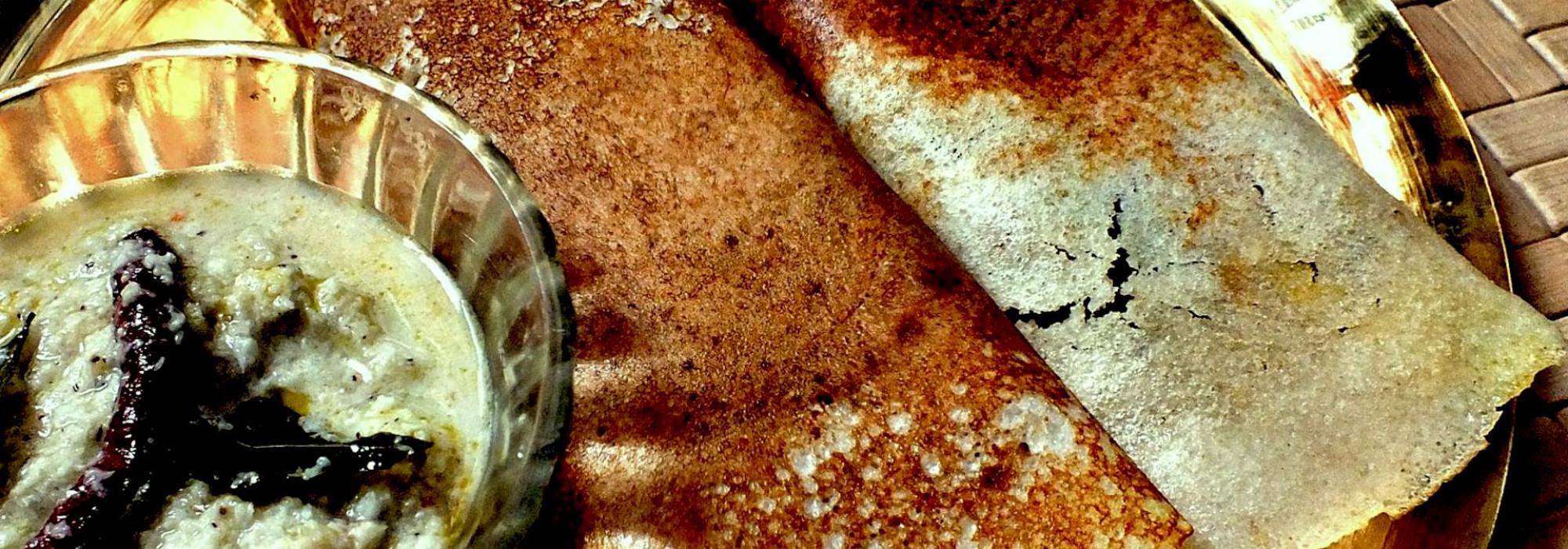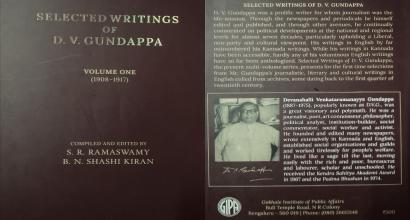Note: This is the first of a two-part series of an English translation of D.V. Gundappa's essay titled "Bengalurinalli Hotel Udyamada Arambha," the tenth essay in the volume titled "Hrudaya Sampannaru," in the Jnapaka Chitrashale volumes.
The first person to establish a hotel in Bangalore was a Brahmana hailing from Mulabagal. His name was Avani Narasinga Rao. Avani is a village about five – six miles from Mulabagal. Avani is also known as Avanti Kshetra. Some people call it as Valmiki Ashram. Locals say that Sita Devi gave birth to Lava and Kusha in that village. They point to a pond amid its hilly rocks and say that this was where Sita washed the soiled clothes of her children. There is a Sita Devi temple atop the hill. Some people refer to it as Sitamahalakshmi while others call it Sitagowri.
The cluster of five Shiva Linga temples – Ramalingeshwara, Lakshmanalingeshwara, Bharateshwara, Shatrughneshwara and Anjaneshwara – at the base of the Avani hill are beautiful. They are lovely and elaborate constructions. The lush grass bed inside the temple precincts are truly picturesque. Daily Pujas take place in the traditional method in all five temples and in the Sita Devi temple atop the hill. This place is ideal for those who wish to engage in Tapas and Yoga.
Perhaps a Matha was established there after taking all these into consideration. I think that this Matha was founded by Maharshi Vidyaranya. The name of the Swami of the Matha carries the honorific, “Vidyaranya.”
garalākhyapurē śaṃbhōḥ
suralālita gōpurē |
kalaśaughaṃ pratiṣṭhāpya
vidyāraṇyō mahāmunē ||
This is the verse commemorating the consecration of the Kalasha on the dome of the temple in Nanjangud during the regime of Krishnaraja Wodeyar III.
The Dignity of Sri Narasinga Rao
Sri Narasinga Rao hailed from such a place. I have only heard about him, not met him in person. Sri Narasinga Rao used to visit Mulabagal about twice each year. I was maybe five – six years old in those days. A few prominent people in town would be aware of the news of Sri Narasinga Rao’s visit beforehand. They would discuss among themselves, “Narasinga Rao might come tomorrow…perhaps day after.” Some would refer to him in the singular and others in the plural. On one occasion when this discussion was going on, I questioned my younger grandfather. He said: “He’s from Avani. He has established a hotel in Bangalore and made tons of money. Now, because he’s a wealthy guy, people have started addressing him in the plural.”
Sri Narasinga Rao used to arrive in a Special Jataka [horse-carriage] either from Kolar or Bowringpet. A group of eight or ten people would receive him. After he got down from the carriage, a couple of people would offer him lemon and exchange pleasantries. A couple of others would carry his luggage and place it in his lodgings. I recall witnessing this celebration.
The Hotel of the Avanis
Avani Narasinga Rao’s hotel was located on the left row of Chickpet after eight – ten houses from the junction where Doddapet and Chickpet met. It was close to the shop of “Rajasevasakta,” the late Pamadi Subbarama Shetty. I have heard old folks refer to it as the “hotel of the Avanis.”
It appears that Avani Narasinga Rao was a connoisseur. He had maintained a second family. He was also generous. He was a benefactor of many Pujas in temples whenever he came to our town. He gave generous donations to Brahmanas. I can’t say when he passed away. Perhaps when the first plague struck Bangalore: I guess it was around 1898 – 99.
The second hotel that I saw in Bangalore belonged to Sri Venkanna. He too, was a Brahmana. When we turn to Arcot Srinivasacharlu Street from Chickpet, there was a house on the left: the fourth or fifth building. It belonged to Government Advocate, S. Narayana Rao. It was built from mortar, a massive house in those days. For a few years, a famous person named Pashupati Iyer used to carry on the businesses of mill yarn and moneylending from there. Pashupati Iyer originally hailed from Madras. He was a great source of assistance to the politicians of that era. V.V.S. Iyer, Subrahmaniya Bharatiyar, E.L. Iyer and other revolutionary patriots belonged to that group. Sri Venkanna’s hotel cum home appeared stuck to the southern portion of Pashupati Iyer’s house. I am referring to the period of 1905 – 6.
Registration
In those days, I used to live in Chamarajpet. It was common to hear the praise of Sri Venkanna quite frequently in the neighbourhood. If you arrived home late, the invariable question was: “You’d been to Venkanna’s hotel, right?” or, “Who knows what you’ve gobbled in Venkanna’s hotel? That’s why you’re not hungry!” This was how Venkanna’s name was remembered at all times.
My curiosity inflamed, I asked a friend to take me there. He said: “I’ll take you there next Sunday.”
Me: “Why the delay?”
He: “You won’t get a place to sit in Venkanna’s hotel if you go whenever you feel like it. You must pay money in advance and register your name.”
And so it happened thus. Within 4 P.M. on Saturday, one had to pay four or eight annas as advance and mention the exact number of people who would be coming the next day and register our names.
My First Meeting
In this manner, my friend Sheshagiri made the aforementioned arrangement and took me there one Sunday. It was about 7:30 in the morning. Venkanna employed no staff. The moment he saw us, Venkanna asked:
“Are you Brahmanas?”
“Yes”
“Did you finish your bath?”
“Yes”
“Why is there no Vibhuti on your forehead? There, it’s there in that box. Apply it.”
I applied the Vibhuti. By then, three people who had arrived before us were seated on the floor, their backs to the wall. The two of us joined them. Venkanna gave each of us a slice of plantain leaf. He emerged from the kitchen with fresh, hot dosas and served two each to the three who had come before us. Chutney along with it. Our turn was next.
To be continued









































